Lately, I’ve been on the lookout for workwear recommendations.
What’s something that you can wear – as an adult male (of distinctively non-adultlike proportions) in a somewhat conservatively collectivist society – that’s still chic, all without risking your derrières looking, shall we say, a little too well-endowed?
The subject came up in a conversation at work recently. And while nothing fruitful had come out of it (he said “oversized tees,” and I stopped listening), I was delivered with a particularly crushing blow when said co-worker proceeded to call my dearest new (to me) Bottega *gasps* a fake! A fake! When, in fact, it very much was real!
But could you really blame the boomers in the building? As someone too petite for his age, yours truly could still pass for a minor – I’m not sure how I’m allowed to have a job in the first place. It’s also true that, in the absence of IP regulations, folks can – and frequently do – freely ferry around fakes in these parts.
An Exclusive Look At the New Louis Vuitton X Murakami Nano Speedy Bags dupe, or anything but the real deal?
What even is age – or youth, or adulthood – aside from an embarrassingly abstract account of your years of existence on planet Earth?
Taking the Age out of Heritage
“In my art director era,” captions Piper Taich while neatly assembling a tan Coach Soho, Adidas trainers, and an Olympus camera onto a plastic grey (and reportedly, very dirty) tray. A graphic designer by profession, she’s right at home with the latest in Gen-Z’s long list of online obsessions – the TSA tray aesthetic. It’s a carefully curated social media “art form” that many have gone on to vilify as vapid.
You see, it’s this frivolity associated with youth—as opposed to the seriousness of seniority—that has traditionally led to an age divide among luxury consumers.
But the Sleeveless down jacket in lightweight nylon today is far from what it was thirty years ago, characterized by “that rich aristocratic European or East Coast lady who wore big gowns, husband in a tuxedo, and who went to big galas,” as Michael Kliger As a result, they fall squarely into the bracket of the coveted but rather vague.
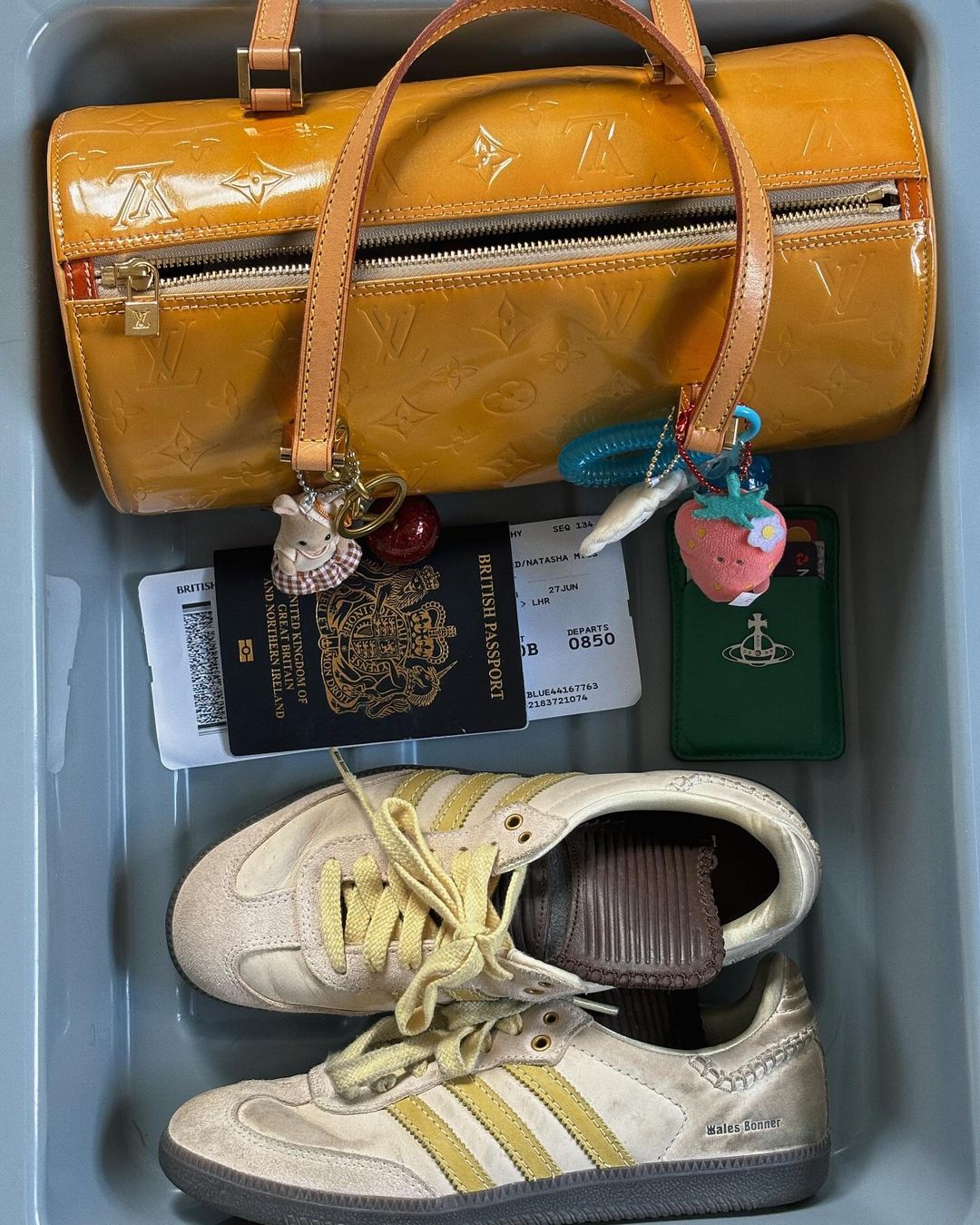
Instead, members of Gen Z, as Bain & Co. research suggests, have been known to start luxury shopping earlier than their Gen Y precursors – at around age 15 – with 75% of young Americans having attested that “luxury is part of their daily life.”
Perhaps this has to do with a desire to be taken more seriously—the oldest of them, now in their mid-20s (yours truly included), is not exactly “young” anymore.
It’s also, at the same time, a testament to generational conflict.
Bottega Veneta Forum. Gen-Alpha, on the other hand, is now with “iPads in hand, ready to take the piss out of how their older siblings wear mega low-rise jeans with diamante butterflies on the ass and comment, “She’s so real for this” under every TikTok clip in their vicinity.”
But heritage houses, it seems, would rather refrain.
The Means, the Memes, and the Tomatoes
Now, Gen-Zers, while well-versed in the language of luxury, have proven to be notoriously difficult to impress. Having grown up in the era of opulent excesses, abruptly followed by the recession, they’re cautious consumers, to say the least.
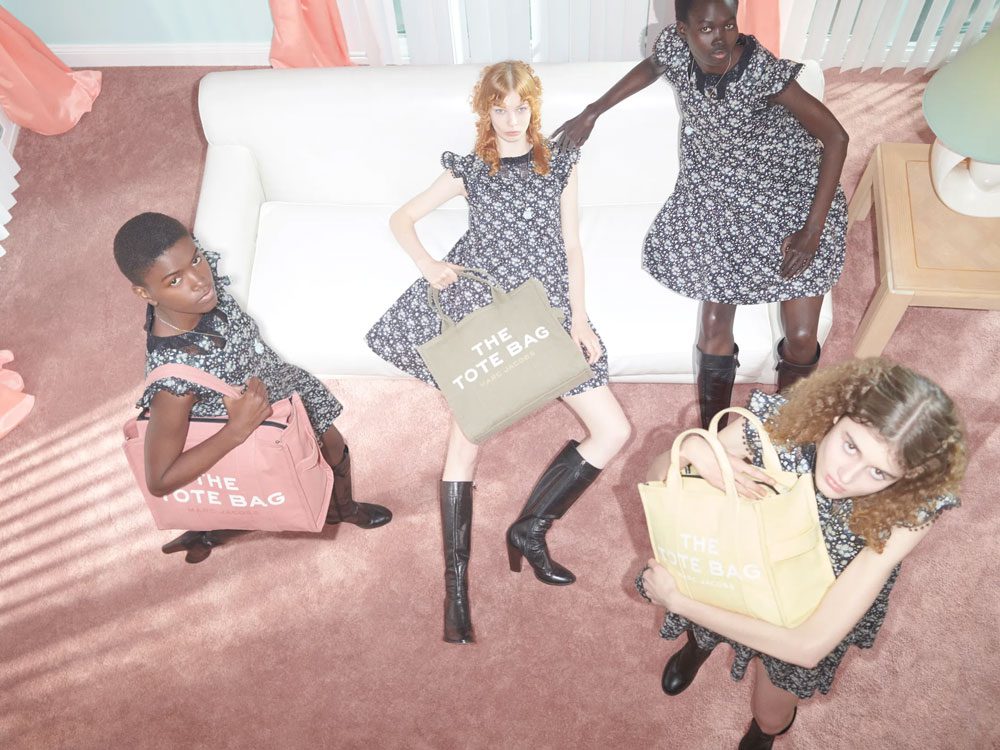
As a result, they fall squarely into the bracket of the coveted but rather vague, aspirational customer, whose spending rose with the ebbs of pandemic stimulus checks and fell with the flows of inflationary influences. It makes sense, therefore, that brands would rather prefer the stability of ultra-wealthy Baby Boomers and millennials—with their continually accruing riches—via VIP-only stores, too, no less!
But it’s also these youth that are online, almost chronically so.
As Vox jokes, “People find out about trends online, and shop online, then sell old pieces online so they can buy a new statement item … online.” The Boomers and Gen-Xers in their thirties weren’t polling for the internet’s Loewe Tomato, watching the Sylvanian Drama critters shoplift the Tote Bag on Marc Jacobs’ TikTok, too, no less Charli XCX, or DM-ing their colleagues “lmao.”
Instead, it’s the Gen-Z – and soon to be, the Gen-Alpha, who are. And if the labels themselves won’t reciprocate, they’d just go ahead and crown their own internet It-bag – Coach’s Brooklyn hobo and Empire Carryalls Sep 11, 2024.
Clearly, it wouldn’t be altogether wise for the brands to ignore them, either.
Influencers: Fashion’s Fountain of Youth
How has fashion dealt with the fleeting phenomenon that’s internet youth culture?
Salvation, surprisingly, came in the form of influencers. As Vogue writes, “The influencer can be the suburban mother of two preaching breastfeeding supremacy or the twenty-something whose only mission in life is to secure the season’s most-coveted It Bag or the pimply teenager who plays video games for an inexplicably entranced audience.” Most, however, are definitively and invariably young.
Barely out of their teens, really, while tweenage influencers have a separate market to themselves. Regardless of your age, the influencer is inescapable. One second, they’re twerking to Tinashe’s Nasty to sell you a Marc Jacobs bag, the next they’re decrying hauls and de-influencing you into their loud budgeting wellness program.
But some brands have achieved this in ways that appear slightly less manufactured.
Following the success of the Loewe Tomato, for instance, Jonathan Anderson came out on TikTok with his “Is it cake” iteration of the popular Hammock, Squeeze, and Puzzle bags. The Miu Miu girl, thankfully, offers slightly more diverse representation for the modern youth, with plus-sized models, Australian boys, Chinese septuagenarians, and Hailey Biebers all qualifying for the moniker.
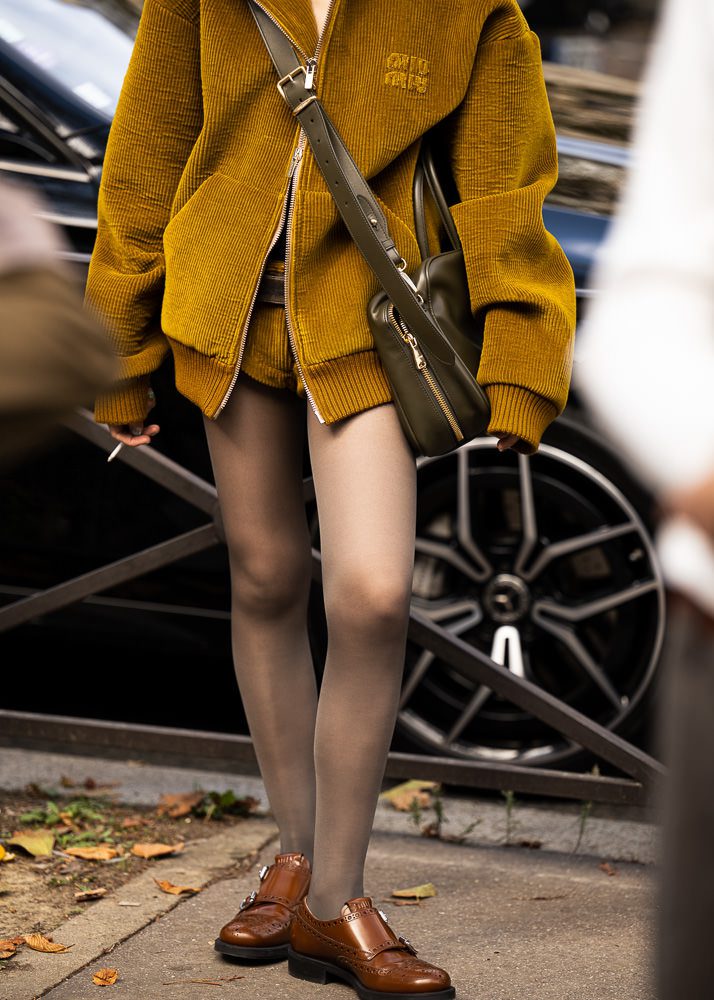
And they’ve seen better success than the recently stalling performances of most brands under the Kering-LVMH portfolios. Hotness, after all, begets riches.
At the end of the day, though, most of their offerings are priced well into the four figures and, thus, out of reach for most. Despite high fashion racing to keep up with youth culture, they never quite were its core customers. As Vanessa Friedman laments in the New York Times, “Well, the 1 percent are the target market for high fashion. The rest of us are left with perfume and lipstick.”
featured image via Miu Miu

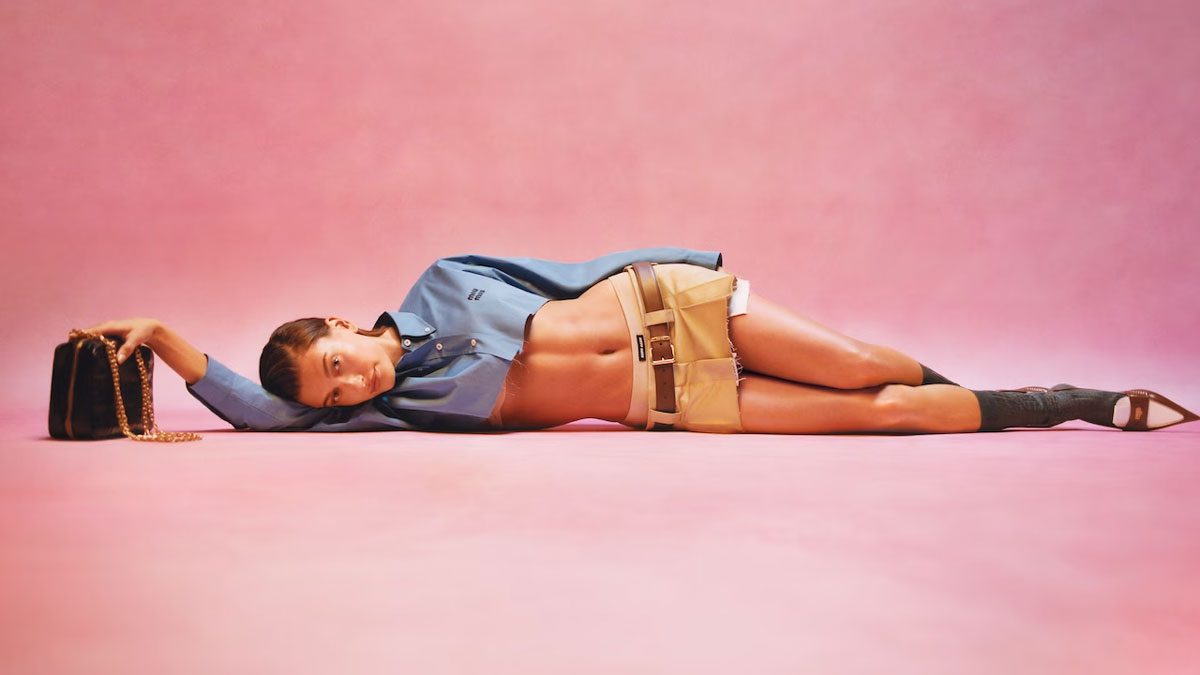

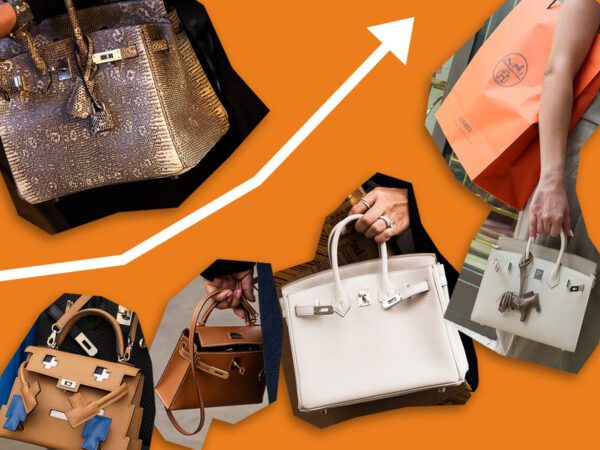








Luxury is for everyone and price points should reflect a range
Sajid, I really loved where you were going with this, especially in the thesis that Gen Z is cautious about what they select, what they *have* selected, and then how they perceive what is luxury and what is not. Re: the ending — Vanessa is astute as always, but what I felt shortchanged on was what your OWN overview of luxury-for-the-youth means to you personally and your own consumption behaviors going forward (e.g. have you decided to embrace being in your own art director/TSA era?).
P.S. I am appalled that your coworker was so tactless as to call out your BV as a fake!
Indeed, I have since dispelled his assumptions, the BV has escaped unscathed, save for a slightly bruised ego.
As for my own luxury consumption habits, I’m interested in the industry’s current direction, especially with the frontrunners such as Miu Miu, Loewe and Prada, as they have moved towards items that suit the wearer’s personality (i.e., bag charms, skewed tailoring, and the meme-effect of it all) rather than obliterate it, even if I am entirely priced-out of their price-points.
And as a result, I also have started gravitating towards items that have more “personality” (more coming on that soon, hopefully) or even decorating my existing bags with trinkets and tchotchkes.
But what is also interesting is that, even if the entire notion of luxury being an older person’s game happes to be true, is the idea of it still desirable enough, so that when the youth of today is older, they will become its core clientele? Or is there likely to be an inflection point when no buyers are left for these brands?
As people get older I think they move toward different brands; this is why brands have conglomerates own portfolios. e.g. you might start out with Sephora, then save enough money for Marc by Marc Jacobs, age into Marc Jacobs, then into LV, then into Celine. Whatever your path, your money is still being captured by LVMH.
As I age, I’ve been surprised at my own increasing preference for simpler silhouettes and colors over time (info overload feels especially taxing post-COVID). I prefer increasingly what saves me time (goaling quickly and intuitively on brand, budget, catchet) vs. takes my time (discovering, evaluating, matching-with-my-closet, procuring, waiting, returning, etc—arguably more fun but also a lot more time-consuming). Money lets me pay others (e.g. creative directors, product designers; tastemakers) to do more of that thinking for me vs. having to take the time to do that thinking myself.
But I think of my (Gen Z) sib who works at one of the Condé mags, and they talk about how the younger Gen Z employees dress vs. Condé lifers who are well-to-do women in their late 30s and early 40s. While the more tenured (and tired, with young children) employees let Celine and Toteme do the “thinking” for them, the priced-out but significantly more energetic younger employees are constrained to play with color and silhouette, crawling thrift, vintage, and TRR to find much more interesting ways to assert themselves.
So who’s “better dressed?” It feels like “dressing”, “fashion”, and “luxury” are different games. As I get older, what I think of as “luxury” is more – trading my money and time for “material” quality. Of course having money is very nice. But it is the tradeoff I made with my youth and health. I remain fond for the days when I’d think a lot about what to buy to go with what, and how I’d get the most out of my limited cash. I believe one of life’s greatest luxuries is the luxury to think for oneself in an unhurried manner and chase an idea down to its most authentic expression, whatever that creative endeavor might be.
Anyways Sajid, love your articles and that you provoke new and interesting questions. Please keep them coming! <3
When I was young I wanted to be perceived as older and now I’m older and want to be perceived as younger. When your young I feel like you have total creative freedom to express yourself and everything goes because your young and in a more experimental phase so just have fun with fashion and color and shape and try it all and don’t worry about ‘settling down’ to some ‘classic’ or ‘holy grail’ bag. This is not your ‘classic’ phase! Your taste will change! As I got older I bought the more expensive stuff, both classic and playful because I could afford it. I worked as a designer for 12 years in the fashion industry so this is speaking from someone who lived and breathed this industry and I still follow it even though I’ve since raised kids and completely changed industries since then. Just do you and don’t fret about spending a month’s salary on an expensive bag, you have time for that later when it might only cost you a weeks salary. Have fun, as the young are the ones SETTING the trends and I want to see what your wearing and not what your spending!